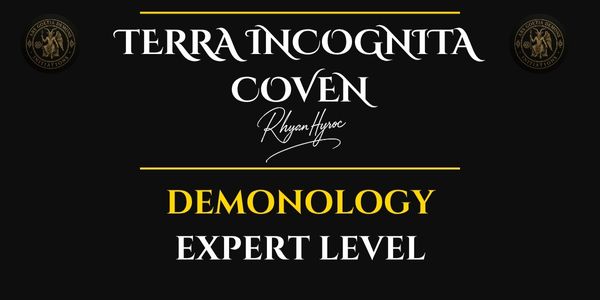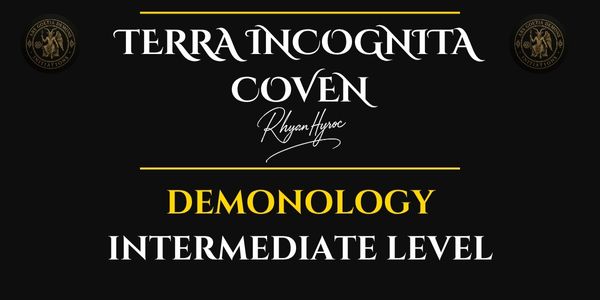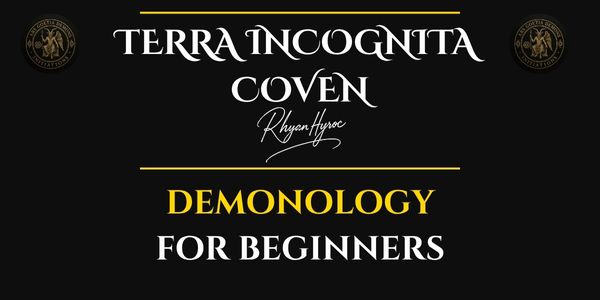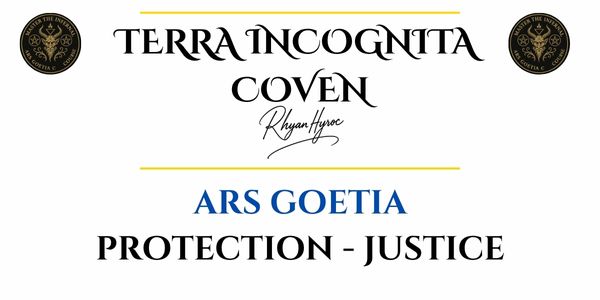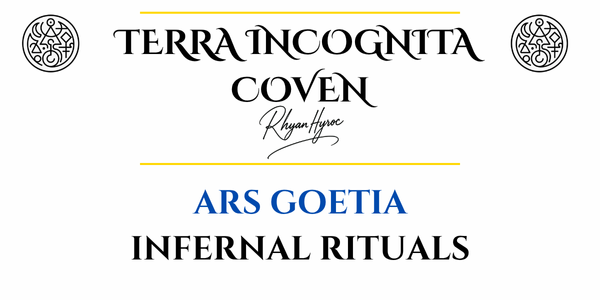Welcome to our Support Portal. Search for answers using the search box below,
or create a support ticket if you cannot find your answer.
Who is Demon Azazel

Azazel: Infernal Gatekeeper of the Wastelands and Bearer of Forbidden Weapons
A Historical and Ceremonial Analysis of the Demon Azazel in the Ars Goetia Tradition
By Rhyan Hyroc, Leading Scholar of the Lemegeton and Ceremonial Demonology
- Azazel: Infernal Gatekeeper of the Wastelands and Bearer of Forbidden Weapons
- The Lemegeton and the Mythic Traces of Azazel
- The Testament of Scripture and the Apocrypha
- Iconography and Manifestation in Ritual
- Azazel in Modern Ceremonial and Luciferian Practice
- Azazel’s Role Beyond the 72
- The Weapon-Bearer and the Watchers’ Legacy
- Contemporary Interpretations and Syncretic Aspects
- Working with Azazel: Ritual Keys
- The Iron Wisdom of Azazel
- Frequently Asked Questions About Azazel
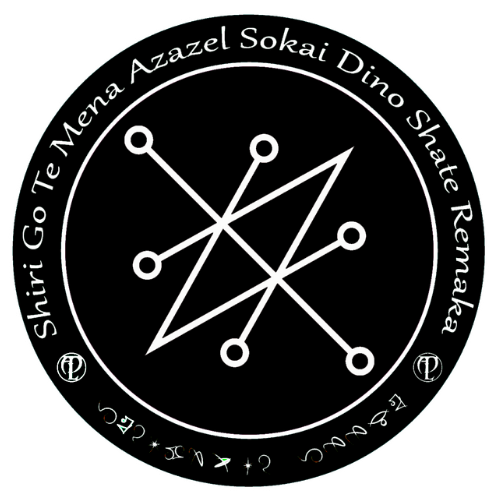
The Lemegeton and the Mythic Traces of Azazel
Though not found explicitly among the 72 demons of the Ars Goetia in most classical enumerations, Azazel occupies a profound and enigmatic place in the wider demonological corpus often referenced by post-Goetic occult traditions. His reputation is drawn not only from medieval grimoires but stretches back into ancient Hebraic and apocryphal traditions, including the Book of Enoch and Leviticus, where Azazel is named as a desert-dwelling spirit to whom the scapegoat was banished.
In modern Goetic circles and within certain expansions of Solomonic practice, Azazel is often invoked or regarded as a powerful auxiliary spirit, or even as a secretive infernal intelligence ruling beyond the traditional 72. He is frequently connected with knowledge of warcraft, weaponry, sorcery, and forbidden arts once given to humanity. His energy is stark, ancient, and sacrificial—intimately tied to desolation and transformation by ordeal.
The origin of the name “Azazel” is subject to much scholarly debate. Some derive it from azaz (rugged/strong) and el (God), rendering “God strengthens” or “strong one of God.” Others claim it means “scapegoat,” as per Leviticus 16:10, where the goat sent to Azazel symbolically bore the sins of the people into the wilderness.
In later occult traditions, especially those influenced by grimoiric synthesis or diabolical hierarchies of the 18th–21st centuries, Azazel is elevated to a figure akin to a “war marshal” of Hell. He is often seen as an initiator of forbidden knowledge, teaching mastery over metallurgy, arms, strategy, sexual arts, and necromancy.
The Testament of Scripture and the Apocrypha
Azazel’s earliest literary appearance is in the Hebrew Bible, but it is in the Book of Enoch where his mythic character expands dramatically. In 1 Enoch 8:1–2, Azazel is described as one of the leaders of the Watchers, fallen angels who descended to Earth and corrupted mankind. He taught humans how to make swords, knives, shields, and breastplates—contributing directly to the violence of the antediluvian world.
“And Azazel taught men to make swords, and knives, and shields, and breastplates, and made known to them the metals of the earth…”
In this context, Azazel becomes a revealer of secrets, much like Prometheus, bearing the weight of divine punishment for illuminating the human path to self-destruction or sovereignty—depending on one’s lens. His fate is exile and binding in the wasteland, echoing both Satanic and redemptive motifs.
It is this intersection—of fallen wisdom, martial prowess, and exile—that makes Azazel particularly resonant for modern magicians seeking power through trial and transgression.
Iconography and Manifestation in Ritual
In ceremonial magick, Azazel does not appear with a singular, fixed iconography. However, certain forms recur consistently in visionary and trance work. He is often seen as a mighty fallen angel with scorched wings, crowned with horns of iron or bone, and bearing weapons of impossible origin. His skin may be metallic or blackened. Some accounts depict him as chained or wounded, reinforcing his status as a figure of sacrifice and banishment.
In Luciferian and Left-Hand Path currents, Azazel is revered as an initiatory godform, an embodiment of rebellion, knowledge through pain, and transformation through discipline. These aspects are frequently explored in systems such as the Qliphothic Tree, Grimorium Verum-derived workings, and the Book of Smokeless Fire traditions.
When summoned, Azazel’s energy is often felt as dry heat, iron pressure on the chest, or the sound of scorched wind. Offerings of iron filings, dark incense, and red wine are traditional. His planetary associations are often tied to Mars and Saturn in syncretic systems.
Azazel in Modern Ceremonial and Luciferian Practice
Today, Azazel is one of the most prominent infernal figures in esoteric Satanism, Luciferianism, and chaos magick. Organizations such as the Temple of Ascending Flame and the writings of Michael W. Ford, Asenath Mason, and others have helped recontextualize Azazel not as merely demonic but as initiatory—a guide of the strong, the broken, and the willful.
For contemporary practitioners of the Ars Goetia tradition, Azazel represents a liminal addition: a spirit of profound influence yet one who transcends the formal order. He is the “Outlaw Initiator,” teaching rites that break boundaries—of the body, of fear, of the known. His gnosis is always edged with danger, but it is precisely this edge that forges true power.
Azazel also figures heavily in psychic and dream-based workings. In visionary pathworkings, many report being taken to desolate, scorched landscapes—mirroring the wilderness of Leviticus—where Azazel imparts grim teachings, tests of endurance, or spiritual metallurgies. These dream-visions often result in transformative outcomes, especially in those undergoing psychic shadow work or martial initiation.
Azazel’s Role Beyond the 72
While Azazel is not listed among the 72 spirits of the Lemegeton, his consistent appearance in parallel and post-Goetic texts—and his function as a gatekeeper, forge-master, and trial-bringer—has made him a permanent figure in contemporary grimoires. He is often seen as a “hidden 73rd” or placed among the spirits “outside the circle” who test, refine, or punish magicians for their lack of discipline or false motives.
Indeed, Azazel is not a spirit who can be compelled with typical command formulas. He responds to strength, clarity, and the acceptance of consequence. Petitions made to him must be forged in honest self-knowledge and undertaken with the willingness to pay the price for power.
This is especially true in rites of shadow integration, ego-death, and martial empowerment. Many ceremonialists who seek Azazel’s guidance report periods of trial and difficulty before breakthroughs of sovereignty and control are achieved.
The Weapon-Bearer and the Watchers’ Legacy
Azazel’s role as the transmitter of weaponry is not only literal but symbolic. He gives the magician the “tools” of self-mastery—often beginning with chaos, temptation, or exhaustion. Through him, the aspirant learns to wield internal fire and external discipline. His presence in martial magick, in particular, remains unmatched. Practitioners invoke him for skill in battle, control of anger, and mental resilience.
Moreover, Azazel’s connection to the Watchers tradition positions him as a threshold guardian between angelic and demonic realms. He stands between worlds—not to keep the magician out, but to burn away weakness before passage. He tests not your ritual tools, but your interior substance.
Contemporary Interpretations and Syncretic Aspects
In postmodern magick, Azazel is often compared with:
- Hephaestus, as the divine blacksmith of Olympus
- Prometheus, for bringing fire (knowledge) to humanity
- Lucifer, for defiance and luminous fall
- Samael, for rulership in desolation
- Abaddon, for command of destructive forces
This syncretism underscores his function as not merely a demon, but a full archetype: the cursed teacher, the outlaw power, the patron of the self-forged. Some visionaries see him as a Titan among demons—older than the infernal hierarchy, perhaps even its foundation.
Working with Azazel: Ritual Keys
While there is no singular grimoire dedicated solely to Azazel within the Ars Goetia, multiple traditions integrate him:
- The Scapegoat Rite, adapted from Leviticus and occult sources
- The Desert Trial Pathworking, involving fasting, ordeal, and dream incubation
- The Forge of Will invocation, using martial sigils, heat, and iron
These workings are often advanced and not recommended for beginners. Azazel’s influence is fierce, alchemical, and deeply karmic. Those who walk his path are rarely the same after.
The Iron Wisdom of Azazel
Azazel remains a polarizing yet essential figure in demonology. He teaches not only sorcery but sovereignty—by trial, not comfort. His gnosis is often earned through dust and blood, yet those who survive his teachings often become masters of themselves.
Though absent from the Lemegeton’s formal roll, Azazel stands as a spirit every serious practitioner must eventually face—either in external work or the crucible of internal fire. He is the silence after the scream, the iron beneath the flesh, and the weapon in your hand that no one else can wield.
Frequently Asked Questions About Azazel
1. Who is Azazel in demonology?
Azazel is a legendary figure appearing in apocryphal Jewish texts, later absorbed into demonological traditions as a powerful spirit of rebellion, forbidden knowledge, and the desert. While not listed in the Goetia, Azazel plays a key role in many occult systems.
2. Is Azazel part of the Ars Goetia?
No, Azazel does not appear in the *Ars Goetia*’s list of 72 spirits. However, he is widely invoked in modern demonological and Luciferian frameworks due to his significance in apocalyptic and magical traditions.
3. What is Azazel’s origin?
Azazel’s earliest appearance is in the *Book of Enoch*, where he is a fallen Watcher who teaches humans the secrets of warfare, enchantments, and beautification. Later interpretations cast him as a demon of exile, the scapegoat, or a chief of Hell’s armies.
4. What does Azazel symbolize?
Azazel represents forbidden knowledge, banishment, and transformation through hardship. He embodies the power that lies beyond social conformity, often invoked by those seeking liberation from imposed moral structures.
5. What does Azazel look like?
Descriptions vary. In some texts, Azazel appears as a fallen angel with a blazing face and bound limbs; in others, as a goat-like entity reminiscent of the scapegoat ritual. Some modern visions present him as a warrior spirit with burning eyes and black wings.
6. What powers are attributed to Azazel?
Azazel is said to bestow mastery of metallurgy, tactics of war, glamour, seduction, occult arts, and wilderness survival. He is also invoked for exile work, personal sovereignty, and breaking oppressive bonds.
7. Is Azazel considered dangerous?
Azazel is not malicious but operates outside moral frameworks. His power can be intense, especially for those unprepared to confront their own shadows. He is best approached with respect and clarity of intent.
8. What offerings please Azazel?
Traditional offerings include blackened iron, obsidian, war relics, ashes, and meditations performed in barren places. Incense such as myrrh, desert herbs, and sulfur are commonly used in his rites.
9. Can Azazel assist in personal transformation?
Yes. Azazel is a master of inner rebellion and initiatory trials. He pushes individuals to confront their exiles, cut illusions, and reclaim sovereignty through resilience and personal fire.
10. How can I work with Azazel safely?
It’s advised to build a structured practice before invoking Azazel. The Desert Forge Within – 21-Day Attunement to Azazel offers a rigorous yet protected path. Start here: https://terraincognitacoven.com/courses/the-illuminated-forge-21-day-initiation-with-azazel/
References
- Ars Goetia Demons – Azazel
This dedicated archive explores Azazel’s controversial role in demonology, mythic history, and esoteric systems. Includes sigil data, planetary attributions, and ritual applications.
https://arsgoetiademons.com/search?q=azazel - Sacred Texts – The Book of Enoch
This primary source outlines Azazel’s earliest appearances in apocalyptic literature, describing his descent, fall, and punishment. A core reference for scholars of angelology and demonology alike.
https://www.sacred-texts.com/bib/boe/ - Esoteric Archives – Pseudepigrapha and Enochian Lore
A robust platform hosting key demonological manuscripts and contextual analysis of Azazel’s role within apocryphal traditions and later magical systems.
https://www.esotericarchives.com/ - Deliriums Realm – Azazel
A concise yet comprehensive treatment of Azazel’s shifting symbolism from Hebrew scapegoat to a figure of forbidden knowledge and rebellion in magical theology.
https://www.deliriumsrealm.com/azazel-demon/ - Occult World – Azazel
Offers insight into Azazel’s integration into occult traditions, particularly in Left-Hand Path currents and modern infernal hierarchies. Details functions, iconography, and invocation guidelines.
https://occult-world.com/azazel/
Demonology Expert Level: Advanced Systems, Possession Theory & Living Demonology
Unlock Sovereignty in the Infernal CosmosYou already feel it. The pull. The call. The invisible…
Demonology Intermediate Level: Mastering Infernal Pathways
Advanced Systems, Possession Theory, and Living DemonologyEnrollment Now Open – Begin Your Ascent Beyond the…
Demonology for Beginners: History, Spirits, and Practical Frameworks
A Complete Online Course for Spiritual Seekers Ready to Understand the Truth Behind DemonsStep Into…
Course for Protection, Justice & Breaking Malice
The Course for Protection, Justice & Breaking Malice at Terra Incognita Coven is a transformative…
Master the Royal Demons
Master the Royal Demons: Transform Your Spiritual Path with Ultimate Authority and Healing is a…
Master the Infernal: Course in Infernal Rituals & Ceremonial Magic
The Master the Infernal: Course in Infernal Rituals & Ceremonial Magic is the core initiatory…

